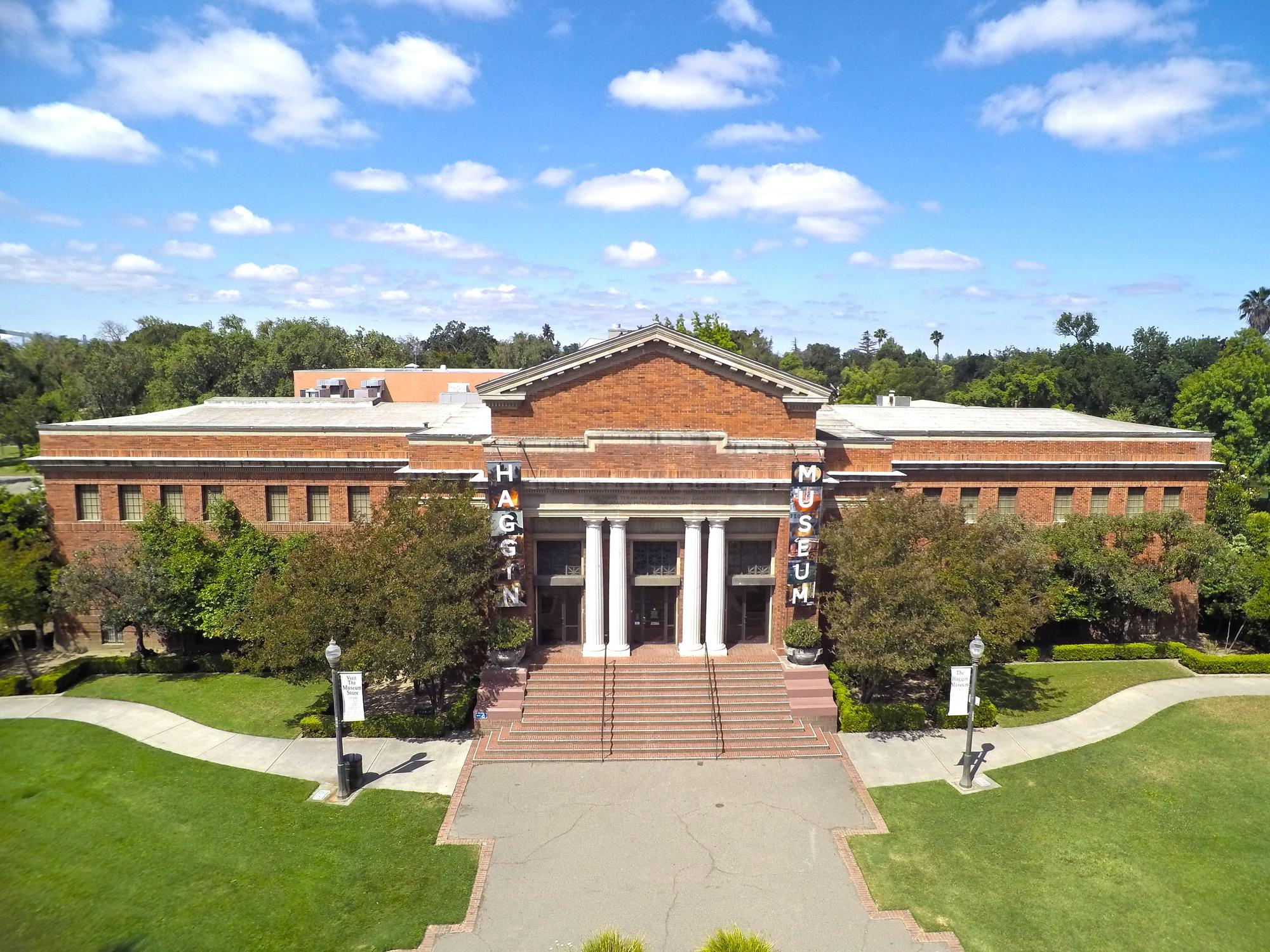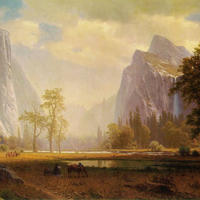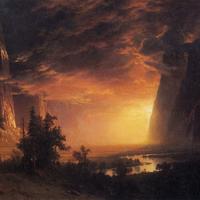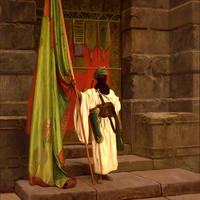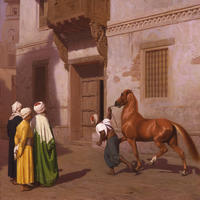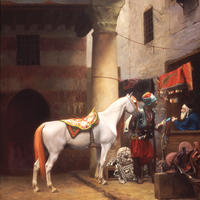More about Haggin Museum

Sr. Contributor
Like many museums before it, and many museums that have been founded since, the Haggin Museum started as the small collection of a local historical society.
In this case, it was the San Joaquin Society of California Pioneers, founded in 1868 by 101 charter members, whose mission was to "collect and preserve information and facts connected with the early settlement of California, especially of the Valley of the San Joaquin” and “to form libraries and cabinets” where items and artifacts could be kept and maintained.
To start off, the Society stored their collection in a building in Stockton, but their collections and budget grew, and by 1891 they were able to move into their own building that they had built; the new building was known as the Hall of the Pioneers. Fast forward twenty years and membership has dwindled for unknown reasons, so naturally their funds have also dwindled, to the point that the remaining members decide to pack it in and sell the building. They ended up with $16,820, equivalent to about $230,000 today. So, now what to do with it? Build a museum, of course! But, like with many things, that would be easier said than done.
Talk of a museum came and went in Stockton over the years, and in 1928 a new organization was formed, this time it was the San Joaquin Pioneer and Historical Society. The money from the original society was apparently not going to be available to the new society, so they would be starting from scratch, with only $694.98 as of their first annual meeting in 1929. At another meeting a couple of months later, there was amazing news: a couple from New York offered to give $30,000 to help fund a museum, if the Society would agree to add a wing for art (the Society was only planning for a history museum) and name it after Louis Terah Haggin.
Louis Haggin was the father of Eila Haggin McKee, and the father-in-law of Robert T. McKee, and he had a considerable collection of art, a significant amount of which would also be included in the deal. Obviously, given their financial state, this was not a difficult decision for the Society; they telegrammed their enthusiastic acceptance to the McKees the next day. When the news broke to the public, people naturally wondered, why were these people from across the country willing to put up their money for a local museum?
Turns out, it wasn’t that big of a mystery after all; Robert was born in Stockton, went to art school in San Francisco and, though he eventually settled in New York, he kept a place in his heart (and wallet) for his hometown. He kept in touch with his relatives and friends in Stockton and became a member of the San Joaquin Pioneer and Historical Society. So, between his interest in the city, and Eila’s wish to honor her father, along with the Society’s plan for a museum, all the stars aligned, and the museum finally opened on June 14, 1931. There were almost 4,000 visitors on opening day, with long lines of people waiting to get in.
The Haggin is both an art museum as well as a local history museum. There aren’t that many of these types of museums around, probably because it’s a challenge to pull off, but the Haggin does a great job with both. Their collection of art includes works by Jean-Léon Gérôme, Rosa Bonheur, Pierre-Auguste Renoir, Childe Hassam, and many others. The history collection contains California Native-American baskets, vehicles, a reconstructed turn-of-the-century Main street, and a creepy blood-stained trunk that was part of a lurid murder trial. The trunk is where Emma LeDoux attempted to hide the body of the man she was having an affair with, who she murdered in 1906. Emma was the first woman sentenced to death in California, although she did escape that fate thanks to a new trial. Something for everyone at the Haggin Museum!
Sources
- Haggin: Jewel of Stockton. Manteca Bulletin - Manteca Bulletin. (n.d.). https://www.mantecabulletin.com/living-in-209/haggin-jewel-of-stockton/.
- Inflation rate between 1920-2021: Inflation calculator. $16,820 in 1920 → 2021 | Inflation Calculator. (n.d.). https://www.in2013dollars.com/us/inflation/1920?amount=16820.
- Jr., Harrison, Alfred. C. (2020, October 27). The collector had a good eye. Alta Online. https://www.altaonline.com/culture/art/a7829/haggin-art-collection-stoc….
- Ruhstaller, T. (2020, June 26). The founding of The Haggin MUSEUM Part I: Soundings Magazine. Soundings Magazine | Bay/Delta Art-Culture-Environment https://soundingsmag.net/2020/05/14/the-founding-of-the-haggin-museum/.
- Ruhstaller, T. (2020, June 26). The founding of The Haggin MUSEUM Part II: Soundings Magazine. Soundings Magazine | Bay/Delta Art-Culture-Environment. https://soundingsmag.net/2020/06/26/the-founding-of-the-haggin-museum-2/.
- Ruhstaller, T. (2020, June 26). The founding of The Haggin MUSEUM Part III: Soundings Magazine. Soundings Magazine | Bay/Delta Art-Culture-Environment. https://soundingsmag.net/2020/07/30/the-founding-of-the-haggin-museum-3/
- Ruhstaller, T. (2020, August 26). Little trunk of horrors: Soundings magazine. Soundings Magazine | Bay/Delta Art-Culture-Environment. https://soundingsmag.net/2020/08/26/little-trunk-of-horrors/.
- Sanders, P. B. (1991). The Haggin Collection. Haggin Museum.
Featured Content
Here is what Wikipedia says about Haggin Museum
The Haggin Museum is an art museum and local history museum in Stockton, San Joaquin County, California, located in the city's Victory Park. The museum opened in 1931. Its art collection includes works by European painters Jean Béraud, Rosa Bonheur, William-Adolphe Bouguereau, Jean-Léon Gérôme, and Pierre-Auguste Renoir, landscapes by French artists of the Barbizon school, and sculptures by René de Saint-Marceaux, Alfred Barye, and Auguste Rodin. The museum also features a number of works by Hudson River School and California landscape painters, including the largest collection of Albert Bierstadt works in the region. In 2017, it dedicated a gallery to display its collection of original artworks by J. C. Leyendecker; it is the largest public collection in the United States, with much of it donated by the artist's sister.
Check out the full Wikipedia article about Haggin Museum

